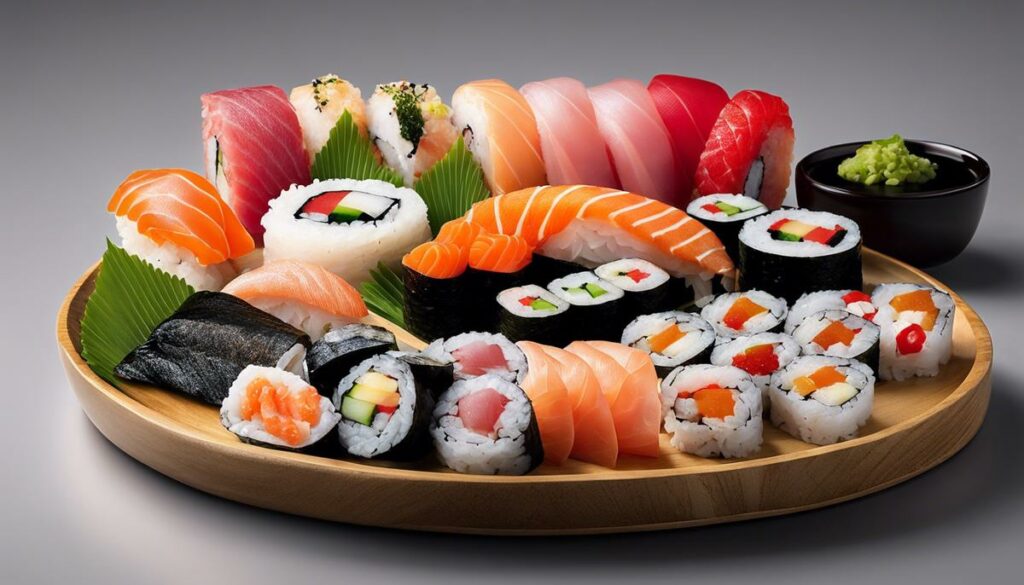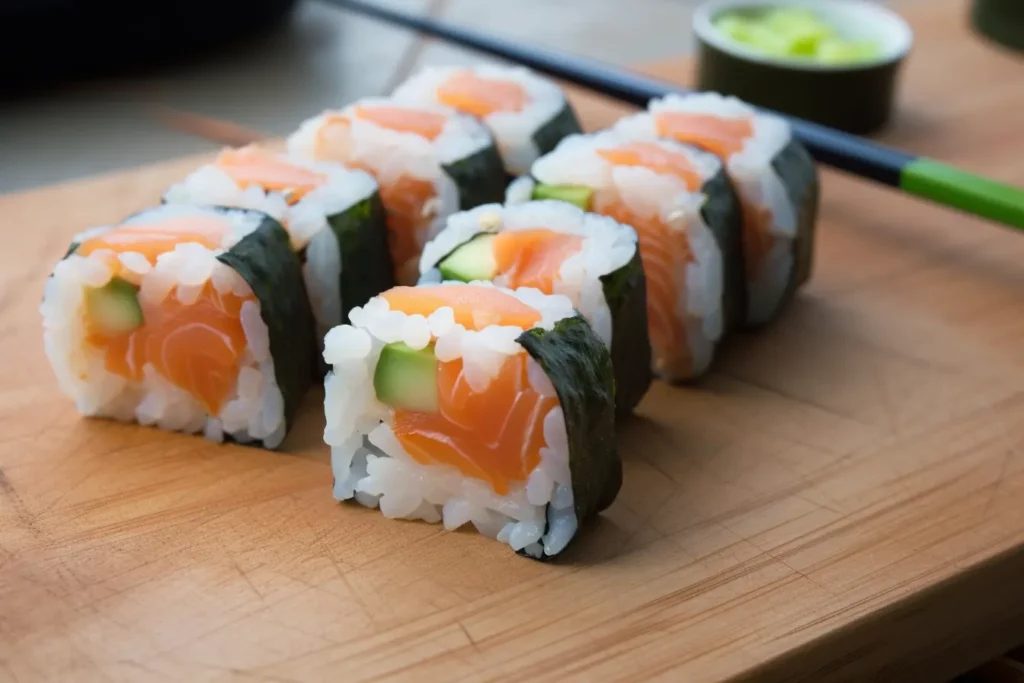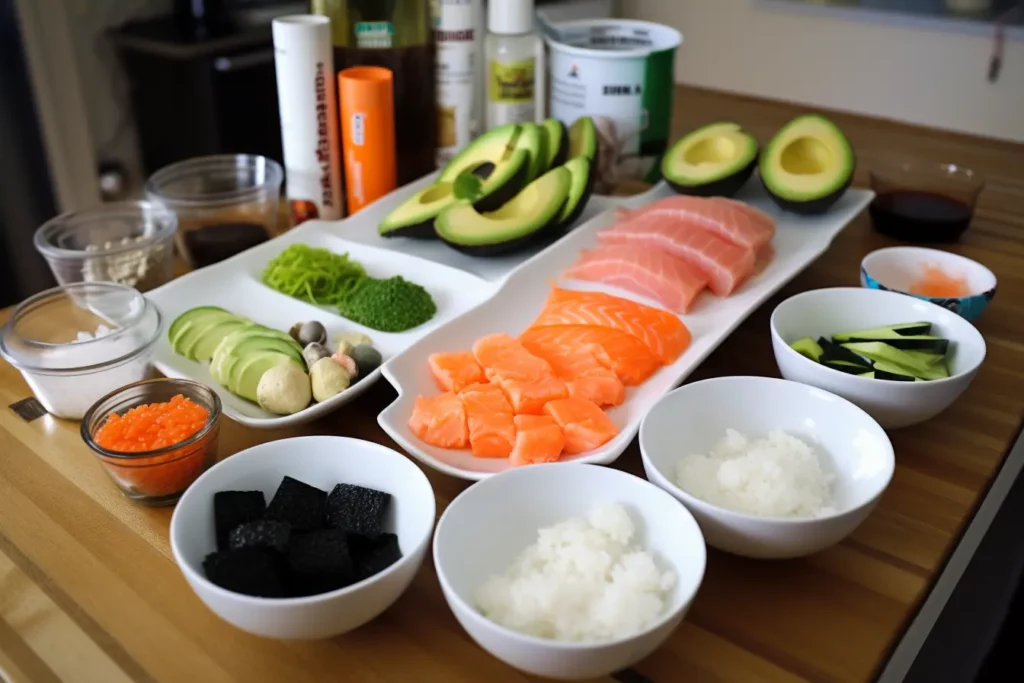The art of sushi making, an intricate millennia-old practice, is nothing short of a captivating spectacle in its finest forms. From the simple but still revered Narezushi, to the traditional nigiri, to the creative maki rolls of our time, the evolution of sushi has left a tasty footnote in culinary history. This handicraft is a harmonious fusion of a sense of tradition and creative expression. With this guide, we’ll take you on a fascinating journey through the history, techniques, and aesthetics of sushi making, as well as how to choose the right ingredients and tools.
The history of sushi making
When the word “sushi” comes to mind, one almost immediately associates it with finely arranged Japanese cuisine. Although we know that it originated in Japan, the true starting point of this culinary pantheon was rather not the fine aesthetics and impeccable presentation that defines our image of sushi today. Let’s take a quick look at the rich history of sushi, which has evolved from a preservation process to a globally popular treat.
Sushi, in its original forms, is believed to date back to the 2nd century BC in Southeast Asia. At that time, fish was stored in boiled rice to make the fish last longer. The sour rice fermented the fish and thus prevented them from spoiling. Later, the rice was simply thrown away and only the fermented fish was eaten. It was practical and efficient, but a far cry from the ornate treat we know today.
In the 8th century AD, the concept of “using sushi”, i.e. the use of fermented rice to pickle fish, was introduced from China to Japan. In Japan, fermented rice began to be eaten together with fish in the 17th century – similar to today’s sushi.
The modern type of sushi we know today originated during the Edo period (1603 – 1868) in Japan. “Edomae Sushi”, or “Sushi off Edo Bay”, was a low-cost fast food option for the residents of Edo, present-day Tokyo. The fish and seafood were freshly caught from Edo Bay and served on hand-rolled rice. This type of sushi could be prepared quickly and, if desired, also bought to take away.
Since then, sushi has become a global culinary sensation, with each culture adding its own twist, from the “California rolls” in the US to vegetarian sushi in India. Nevertheless, the special balance that is so characteristic of sushi always remains the linchpin: the composition of fish, rice and spices, which stands in perfect harmony.
Although the presentation and ingredients of sushi have changed a lot since its creation, the core principle of sushi – the combination of rice and fish – always remains the same. No matter what form it is served, sushi remains a true work of art on the plate and a testament to how simple ingredients can evolve into such a rich and enjoyable culinary delight. Not only is it a tasty bite, but it also holds an important part of Japanese culture and tradition that has now won the hearts (and stomachs) of foodies around the world. It’s always worth taking a look behind the scenes, because sometimes the story behind the food is just as fascinating as the taste!
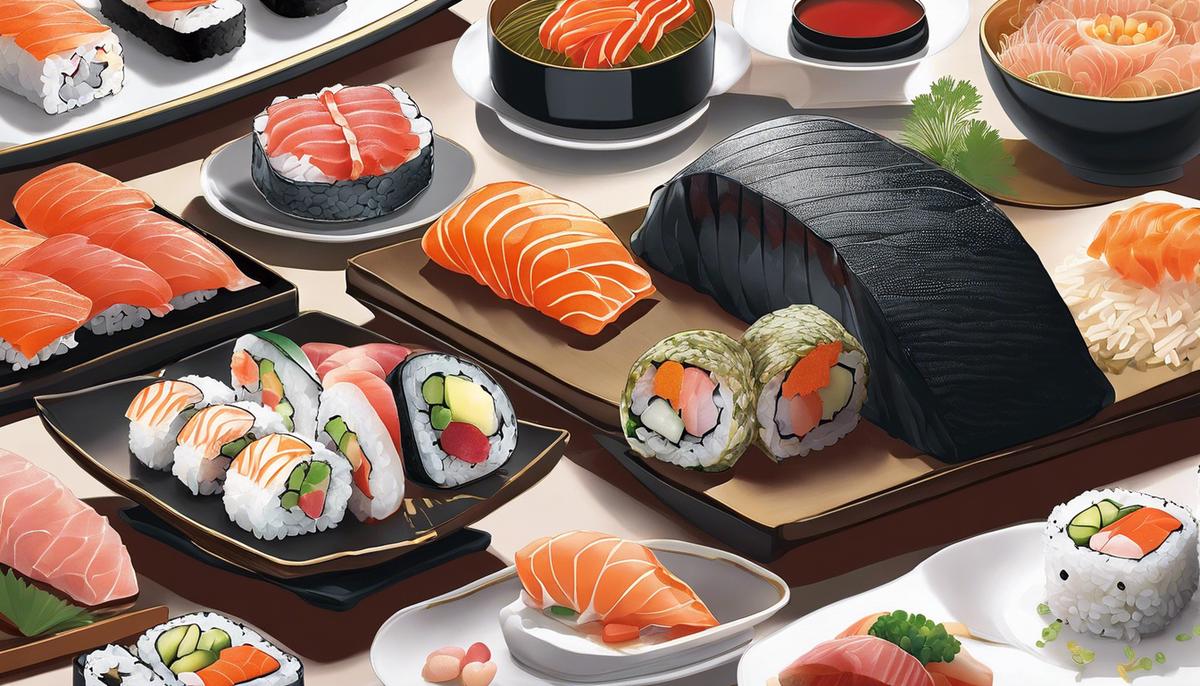
The ingredients and tools for sushi
Now that we’ve shed light on the history and influence of sushi in our culture, let’s focus on the details that make it an art: the ingredients and tools that are essential to making it, and how to choose and use them correctly.
Let’s start with the ingredients. While it’s well known that sushi is made up of a variety of components, there are three main elements that appear in almost every sushi variation: sushi rice, nori, and, of course, the fish.
Sushi rice, also known as shari , is a medium-grain short-grain rice that is chosen for its sticky consistency, ability to retain its flavor and its shape after cooking. It is imperative that the rice is washed well before cooking it to remove excess starch and ensure the ideal shine and texture.
Nori is the dark, almost black leaf of dried and roasted sea vegetables that is often used to wrap maki sushi. When choosing nori for sushi, it is important that it is crispy and without holes or cracks.
Fish is certainly one of the stars in sushi making. Salmon, tuna, octopus and shrimp are classic examples of suitable types of fish. It is crucial that the fish is completely fresh and of the best quality.
In addition, there are other ingredients, but they can vary depending on the sushi variant and personal preferences. These include soy sauce, wasabi, and pickled ginger, also known as gari.
Now for the tools. To begin with, the classic bamboo mats – makisu – is often used in sushi making, especially to shape maki sushi. The Yanagiba knife has a long, narrow blade, ideal for cutting fish into thin slices. A shamoji, the special rice spoon, makes it easier to turn over and mix rice without clumping.
Choosing the right ingredients and tools and using them correctly may seem intimidating at first, but with the necessary knowledge, practice, and passion, anyone can become a master at the art of sushi. So, don’t doubt, take courage and enjoy the experience.
The art of sushi appeals to all the senses and is a powerful marriage of taste, aesthetics and craftsmanship. Not only is it a tasty choice for a meal, but it’s also a way of self-expression and creativity where everyone can try their hand at creating their very own masterpieces in the process. And as in all other areas of life, “it’s the attention to detail that makes the difference.”
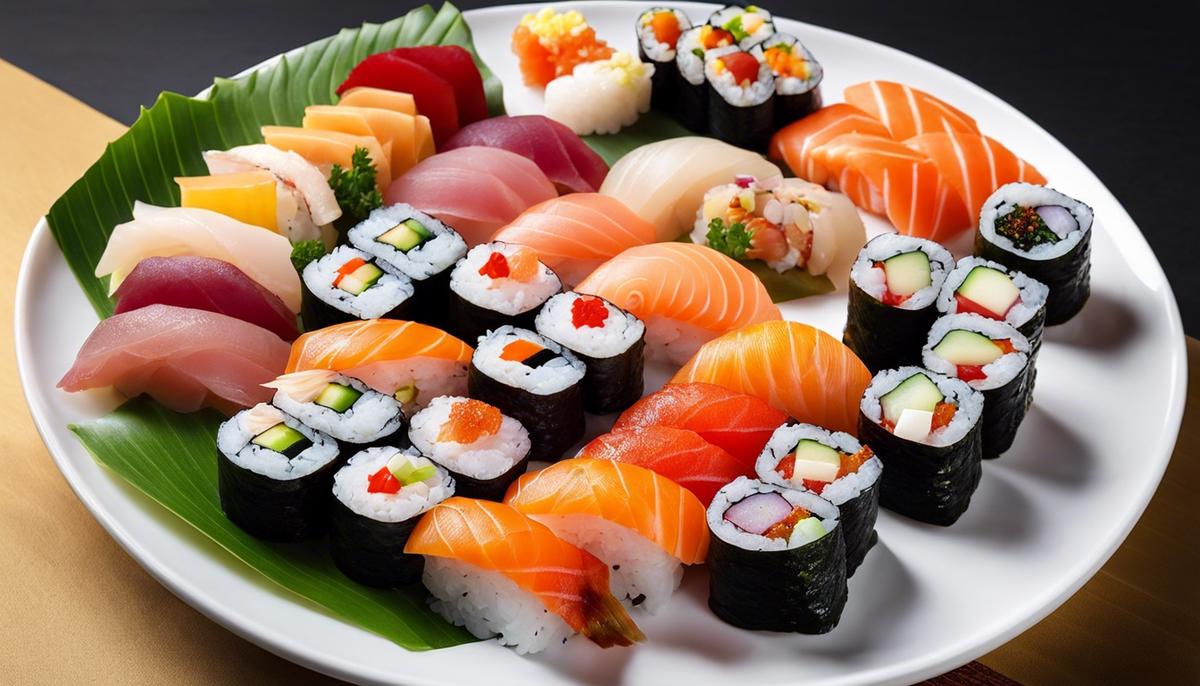
Essential Sushi Preparation Techniques
The more artful and refined the preparation of sushi, the more memorable the experience will be. Whether you prefer sushi simple and minimalist or extravagant and playful, it’s the techniques and craftsmanship that shape the end result.
I. Prepare Sushi Rice:
It all starts with the rice. The perfect texture and subtle taste of sushi rice are essential. The rice should first be washed thoroughly, and then cooked on the stove or in the rice cooker. An important detail is seasoning the rice with sushizu, a mixture of rice vinegar, sugar and salt, once it is cooked. The cooled and seasoned rice forms the basis for every sushi dish.
II. Prepare the fish:
The quality of the fish is another central aspect of sushi preparation. Only the freshest and best pieces should be used for sushi. These are cut into fine, even strips so that they can be easily placed on top of the rice. Salmon, tuna, and shrimp are popular variants, but other varieties can also be used, depending on your taste.
III. Roll Sushi:
Now comes the creative and artisanal part: rolling the sushi. A bamboo mat is an indispensable tool for this. The rice is evenly distributed on a sheet of nori, a fine layer of fish is placed on top, and then carefully but firmly rolled into the desired shape.
IV. Dressing and serving:
Ultimately, the way sushi is served is also an important aspect that should not be underestimated. Aesthetics and presentation play a major role here. Sushi is often served with pickled ginger, wasabi, and soy sauce—all elements that complement the flavor of the sushi and add to the overall enjoyment.
The secret behind the art of sushi making lies in the dedication, passion, and precision you put into every step. It is an interplay of taste and aesthetics, tradition and creativity. Everyone can try their hand at the art of sushi and contribute their individual skills and preferences.
The world of sushi is vast and diverse – an adventure of creativity and taste to be discovered! Now you are well equipped to embark on your own sushi journey. Have fun with this appetizing endeavor!
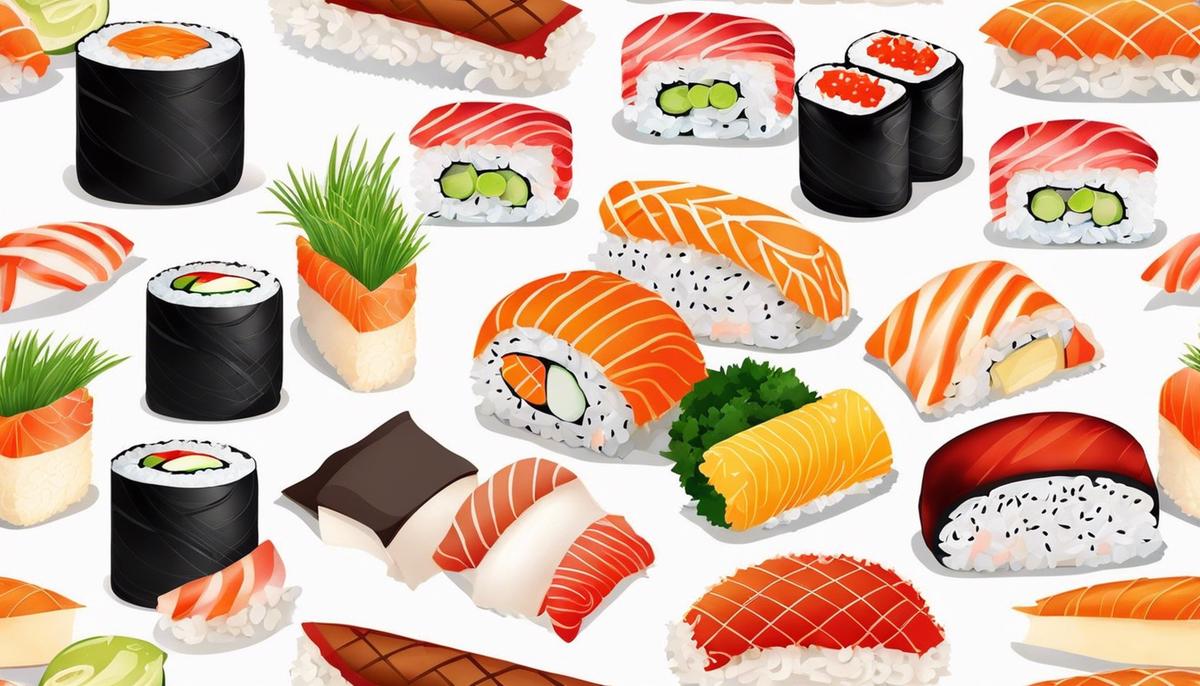
The aesthetics and presentation of sushi
On the road to perfecting sushi craft, we must not forget that the role of sushi’s aesthetics and presentation cannot be underestimated. Just as the eye does not eat, the visual experience does not play a decisive role in the creation of a culinary masterpiece.
Making the sushi tasty is just as important as the preparation. Presentation plays a significant role in the appreciation that a culinary work receives, whether it is the vivid colors that emphasize the sensuality of the experience or the uncluttered arrangement on the platter.
It doesn’t have to be a short-lived Instagram trend to decoratively place yarn on the sushi rolls or create artistic Insta-worthy plates. Rather, it’s about highlighting the natural beauty of the ingredients in a subtle but evocative way.
Another important aspect of the aesthetic of sushi is the concept of the “ma”. This defining principle of Japanese aesthetics emphasizes the importance of empty space, the “negative”, which is just as important as the positive element, i.e. the sushi pieces themselves. This principle of empty space is reflected in the presentation of the platter and serves to draw the eye specifically to the lovingly prepared pieces of sushi.
In addition to aesthetics, it is the perfection of the technique that makes the difference. It takes constant practice and constant improvement to achieve the manual skill that makes the difference between good and excellent sushi.
Just as with any other form of art, it is passion that distinguishes the master. The exquisite refinement of technique and the trained eye for aesthetics show the dedication and passion that the art of sushi preparation requires.
In conclusion, the combination of expertise, finesse and aesthetics is what makes the recipe for success in creating a culinary sushi masterpiece. It is as much a science as it is an art, a balance that must be mastered and maintained. Only then can you be sure that every sushi roll that leaves the kitchen is the perfect expression of the masterpiece that sushi really is.
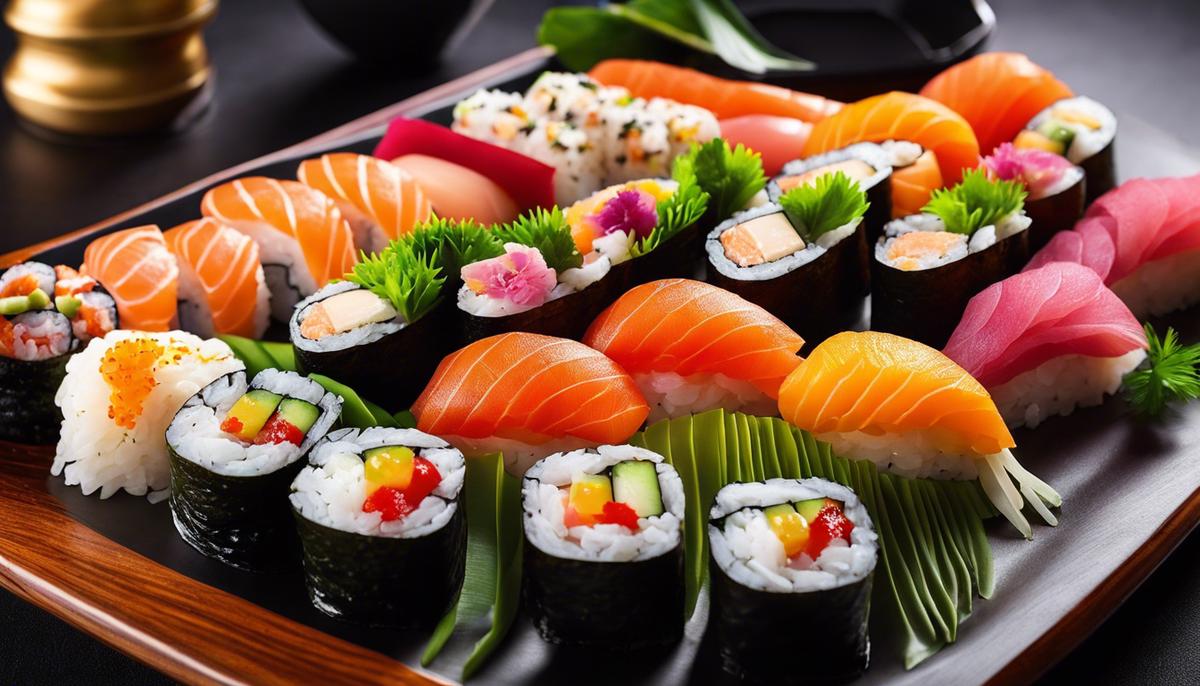
Mastering the art of sushi-making is a steady process of exploration and learning that not only expands your love of food, but also instills a deep appreciation and understanding of Japanese culture. Whether you dedicate yourself to the traditional way of making sushi or invent your own creative variations, never forget that behind every piece of sushi there is a story, an art form, an expression of dedication and passion. The true enjoyment of sushi lies not only in the taste, but also in the fine craftsmanship that goes into every roll and bite. Explore this fascinating cuisine, hone your skills and prepare sushi that will delight both the eye and the palate.
